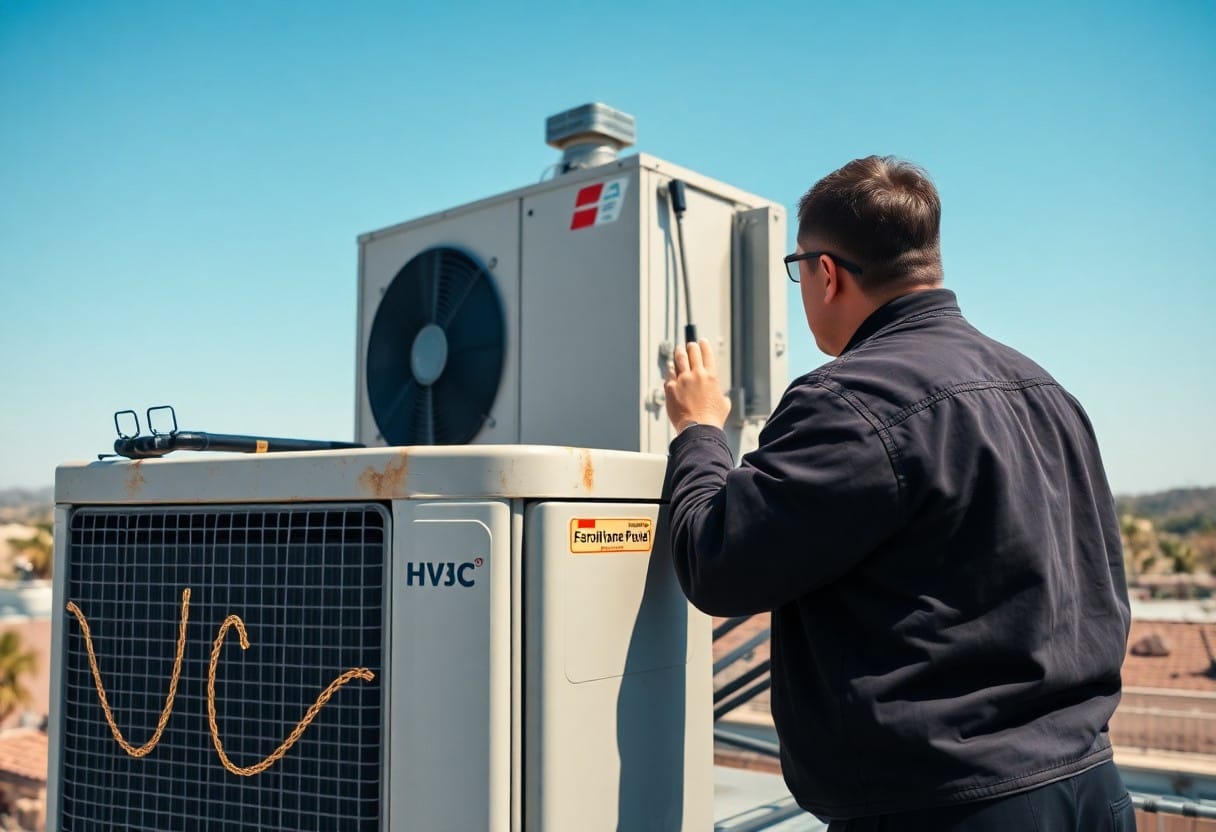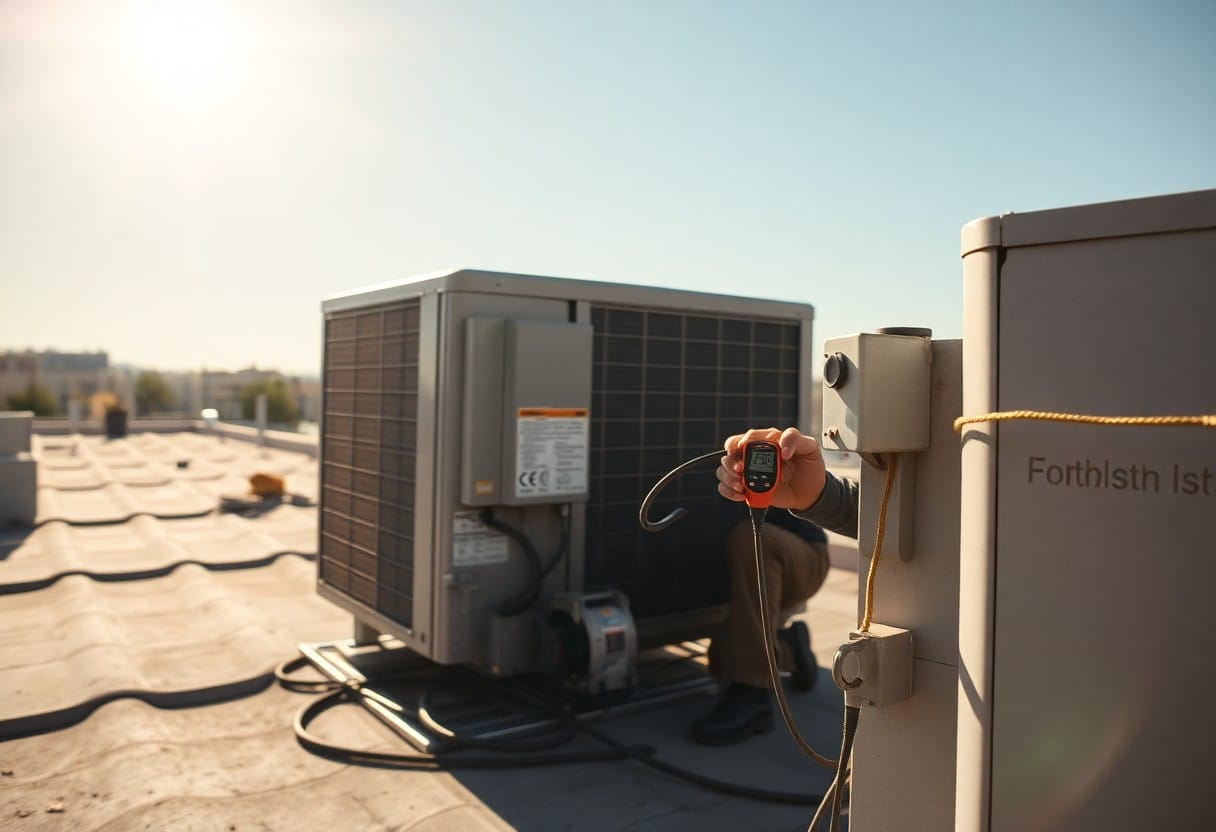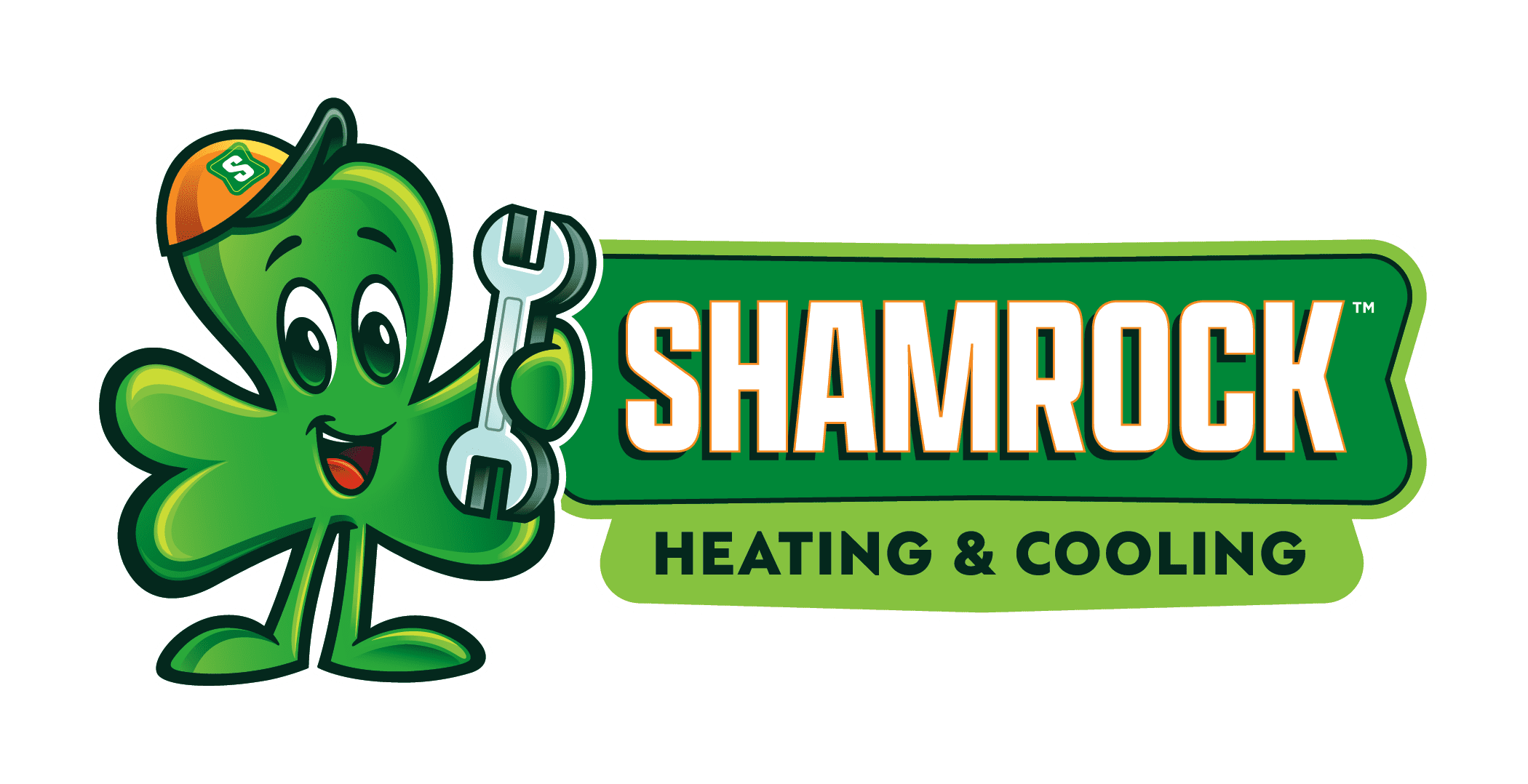There’s a solid chance your HVAC system has faced intense stress during the extreme Phoenix heat this summer. As temperatures soar, many components can become strained, leading to potential issues that may compromise your comfort and safety. Conducting a thorough system assessment now can help identify damaged parts and prevent costly repairs later on. Ensuring your HVAC is running efficiently not only enhances indoor air quality but also extends the lifespan of your unit. Taking these steps now will pave the way for a smoother transition into cooler months.

Impact of Extreme Heat on HVAC Systems
Common System Failures
The relentless heat in Phoenix can push HVAC systems to their limits, leading to various common failures that homeowners should be wary of. High temperatures stress components like compressors and fans, often resulting in overheating. A failure in the air conditioning unit’s compressor, which can cost $1,500 to $3,000 to replace, typically stems from a lack of refrigerant or an electrical issue exacerbated by extreme heat. Additionally, evaporator coils can freeze due to inadequate airflow, producing a cycle of failures that not only leave you uncomfortable but can also result in expensive repairs.
Capacitors and contactors also frequently succumb to the rigor of prolonged exposure to high temperatures. These electrical components are critical for starting the compressor and will fail more readily when subjected to elevated ambient temperatures. If your system is cycling frequently or your unit seems to be running non-stop, these issues may be lurking, leading to a costly breakdown at the worst possible moment.
Signs of Wear and Tear
You may notice signs of wear and tear after an intense summer. Increased energy bills can be a primary indicator that your HVAC system is working harder than necessary. If your unit is struggling to maintain the desired temperature, it is crucial to evaluate its condition. Frequent short-cycling—where the system turns on and off rapidly—can also signal that components are wearing out, particularly if the filters and ducts are not clogged or dirty.
Unusual noises, such as grinding or rattling, may indicate that parts are on the verge of failure. Additionally, any unpleasant odors emanating from the system could suggest electrical failures or mold growth, both of which can compromise indoor air quality. Ignoring these signs can amplify future repair costs, so addressing them as soon as they arise is advisable.
Your HVAC system undergoes significant strain during extreme heat events, and subtle indications of decline should not be overlooked. Addressing issues promptly can prevent escalating problems, which in a worst-case scenario, might leave you without climate control during future heat waves. Scheduling regular inspections and maintenance can extend your system’s lifespan and improve efficiency, minimizing wear and tear.

Importance of Post-Summer Assessments
Completing a post-summer assessment of your HVAC system offers a strong advantage in maintaining optimal performance. The extreme Phoenix heat exerts significant wear and tear on your equipment, making it crucial to identify potential issues early. Routine inspections at this stage can reveal hidden problems, such as refrigerant leaks or electrical malfunctions, which can lead to breakdowns if left unaddressed. You can enhance the longevity of your HVAC system by proactively identifying these problems before they escalate, ensuring that you maintain a comfortable indoor environment throughout the year.
Timely assessments also allow you to optimize your system’s efficiency. A well-maintained HVAC system can provide improved air quality and lower energy consumption, thus translating to lower utility bills. Regular checks after the summer months act as a reset, ensuring that filters, coils, and ducts are clean and functioning optimally. This approach maximizes your system’s output while minimizing unnecessary strain, which can otherwise lead to more significant repairs down the line.
Preventative Maintenance
Adopting a robust preventative maintenance routine can dramatically improve your HVAC system’s reliability. Simple tasks, such as changing air filters or cleaning condenser coils, can prevent dust and debris accumulation that hampers system performance. Regular servicing allows HVAC technicians to spot early indicators of trouble, such as unusual noise or airflow problems, leading to timely repairs. Engaging in preventative maintenance not only reduces the risk of sudden breakdowns but also extends the life of your HVAC equipment.
Scheduling professional inspections at the end of summer enables technicians to conduct thorough assessments that you might overlook. They can calibrate your system for maximum efficiency and replace any worn-out parts. By making this commitment, you position your HVAC system for seamless operation during the cooler months, ensuring that you’re not caught off guard by unexpected failures.
Cost Savings and Efficiency
The economic benefits of a well-maintained HVAC system are substantial. Statistics show that effective preventative maintenance can reduce energy costs by up to 30%. By maintaining clean filters and ensuring smooth operation, you drastically decrease the load on your system, which in turn reduces wear and energy consumption. Early detection of problems during your post-summer assessment can prevent costly emergency repairs, saving you hundreds on potential service calls.
A further analysis has demonstrated that households engaged in consistent HVAC maintenance experience fewer system failures, ensuring uninterrupted climate control throughout the year. This creates not only peace of mind but also allows you to budget more effectively, as predictable maintenance costs are often much lower than unplanned emergency expenses associated with system breakdowns.
Key Components to Evaluate
Refrigerant Levels
Your HVAC system relies heavily on the right amount of refrigerant to maintain efficient cooling. Low refrigerant levels often signal leaks within your system, which can lead to increased energy costs and insufficient cooling power. Checking your refrigerant levels should be a priority; typically, these levels should match the manufacturer’s specifications, which are detailed on the unit’s label. If your system is underperforming, you may need a professional to conduct a leak detection assessment and recharge your system properly.
Leaking refrigerant poses not only operational issues but environmental hazards as well. Certain refrigerants, such as R-22, can contribute to ozone depletion. Transitioning to newer, more environmentally friendly refrigerants may be a wise long-term strategy, especially if your system is aging. Regularly monitoring and managing your refrigerant levels will enhance your HVAC system’s lifespan and efficiency.
Insulation and Ductwork
Evaluating your insulation and ductwork is crucial for ensuring optimal HVAC efficiency. Poor insulation can lead to significant heat loss or gain, directly impacting your energy bills. Strategies include assessing your attic insulation for R-value, sealing any gaps, and ensuring proper installation. In addition, you should inspect your ductwork for leaks, which can waste up to 30% of your heating and cooling energy. Utilizing duct sealants or mastic can effectively minimize these leaks and improve overall system performance.
The condition of your ductwork directly affects not only the efficiency of airflow but also indoor air quality. Dust, allergens, and even mold can accumulate in poorly insulated ducts, posing health risks. A thorough inspection allows you to identify necessary repairs or cleanings that could enhance comfort levels in your home and reduce energy usage significantly.
Professional vs. DIY Inspections
Benefits of Hiring an Expert
Utilizing a professional for your HVAC inspection guarantees a thorough evaluation of your system. HVAC technicians possess extensive training and experience, allowing them to quickly identify issues that you may overlook. They have access to specialized tools and diagnostic equipment to perform tests on components like compressors and electrical connections. This expertise minimizes the risk of costly repairs down the line, ensuring that your system operates effectively for years to come.
Additionally, professionals are familiar with the specific impacts caused by the intense Arizona heat. For instance, they can evaluate how conditions like extreme temperatures and humidity levels might have affected your system’s performance.
DIY Assessment Tips
If you choose to perform a DIY inspection, you’ll want to familiarize yourself with some fundamental evaluation techniques. Start with checking the air filters and replacing them if they are dirty, as clogged filters can lead to reduced airflow and increased energy consumption. Inspect the outdoor unit for debris, ensuring that it’s clear of leaves and vegetation, which can obstruct airflow. Additionally, listen for unusual noises when your system operates, as these could indicate potential issues.
Establish a routine for checking the thermostat calibration to ensure it’s accurately reflecting your home’s temperature. This small adjustment can lead to significant energy savings. Regardless of how careful you are, any discrepancies or uncertainties should prompt you to seek professional assistance; a thorough evaluation may uncover issues that are not immediately apparent.
- Check air filters and replace if necessary
- Inspect outdoor unit for debris
- Listen for unusual noises
- Verify thermostat calibration
- Conduct regular evaluations to avoid major issues
Any identifiable signs during your DIY assessment should be addressed promptly to maintain your system’s efficiency and functionality.
- Familiarize yourself with system components
- Document findings for future evaluations
- Consider using a HVAC checklist
- Pay attention to energy bills for spikes
- Seek professional help if unsure about findings
Any oversight in your assessment can lead to further complications, so vigilance in monitoring your HVAC system is necessary.
Recommended Post-Summer HVAC Services
Cleaning and Maintenance
Your HVAC system has likely accumulated dust, debris, and other contaminants over the summer season. Thoroughly cleaning your system can improve indoor air quality and enhance efficiency. Begin with changing or cleaning the air filters, which should be done every one to three months, depending on usage. Additionally, consider scheduling a professional duct cleaning to remove buildup from the ductwork that can circulate harmful particles throughout your home.
Examine the condenser and evaporator coils for dirt and grime. Dirty coils force your system to work harder, increasing energy consumption by 5% to 15%. A professional maintenance service will not only clean these components but also assess the overall system functionality to ensure your HVAC operates smoothly during the upcoming months.
System Upgrades and Repairs
As the seasons change, it’s wise to assess whether your current HVAC setup meets your needs. Upgrading to a more efficient system can yield significant energy savings and improved comfort. Consider ENERGY STAR-certified units, which use about 10% to 50% less energy than standard models. You might also look into smart thermostats that adapt to your lifestyle, optimizing usage and ultimately lowering utility bills.
If you’ve experienced frequent breakdowns or inconsistencies in temperature control, a professional inspection can provide insight into necessary repairs. Common issues include refrigerant leaks, faulty thermostats, or aged components that need replacement. Addressing these problems promptly will help prevent more extensive damage and avoid higher repair costs down the line.
Investing in system upgrades can enhance efficiency and longevity. Newer models typically feature advanced technology that improves performance and reduces environmental impact. For example, installing a variable speed blower can allow better humidity control, providing both comfort and efficiency benefits. Furthermore, upgrading insulation in conjunction with HVAC improvements can create an even more comprehensive approach to energy savings and performance enhancement in your home.
Seasonal Preparation for the Coming Months
Weatherization Strategies
Effective weatherization strategies can significantly reduce energy costs and enhance comfort in your home during the coming months. Start by inspecting and sealing any gaps or leaks around windows and doors. Utilize weather stripping or caulk to fill these openings, which can prevent conditioned air from escaping. Insulating your attic and walls is another key step that helps maintain your home’s temperature, reducing the strain on your HVAC system.
Consider upgrading to energy-efficient windows or applying window films that reflect heat in the summer months. The Extreme Heat Preparedness Plan outlines further methods to prepare your home for extreme weather, ensuring that you remain comfortable and protected from the elements.
Energy Efficiency Tips
Implementing simple energy efficiency tips can help you save on utility bills while keeping your home comfortable. Regularly replace or clean your HVAC filters as clogged filters restrict airflow and increase energy usage. Programmable thermostats are excellent tools that allow you to set your system to run only when needed, optimizing energy consumption.
During the hottest days, use ceiling fans to circulate cool air more effectively, allowing your thermostat to be set a few degrees higher without sacrificing comfort. Adjusting blinds or curtains to block direct sunlight also aids in maintaining a stable indoor temperature. Assume that small adjustments can lead to substantial savings.
- Regular filter replacement enhances airflow.
- Programmable thermostats improve efficiency.
- Use of fans helps distribute air.
- Block direct sunlight to stabilize temperature.
Being mindful of your energy habits includes conducting an audit of your home’s appliances and electronics. Unplugging devices that are not in use, like chargers and kitchen appliances, reduces phantom energy use. Assume that your proactive steps today will lead to more considerable energy savings during the months ahead.
- Conducting an energy audit identifies waste.
- Unplugging unused devices prevents phantom load.
- Upgrading to energy-efficient appliances lowers usage.
- Regular maintenance keeps systems optimal.
Conclusion
As a reminder, assessing your HVAC system after the extreme Phoenix heat is vital to ensure that it operates efficiently for the remainder of the year. You should inspect filters, ductwork, and components for wear and tear, as these elements can significantly affect performance. Taking the time to evaluate your system now will help extend its lifespan and improve air quality in your space.
Additionally, consider scheduling a professional tune-up to address any potential issues that may have developed during the summer months. You can benefit from enhanced energy efficiency and lowered utility costs while maintaining a comfortable environment in your home or business. By prioritizing these assessments, you position yourself for a smoother transition into the cooler months ahead.

